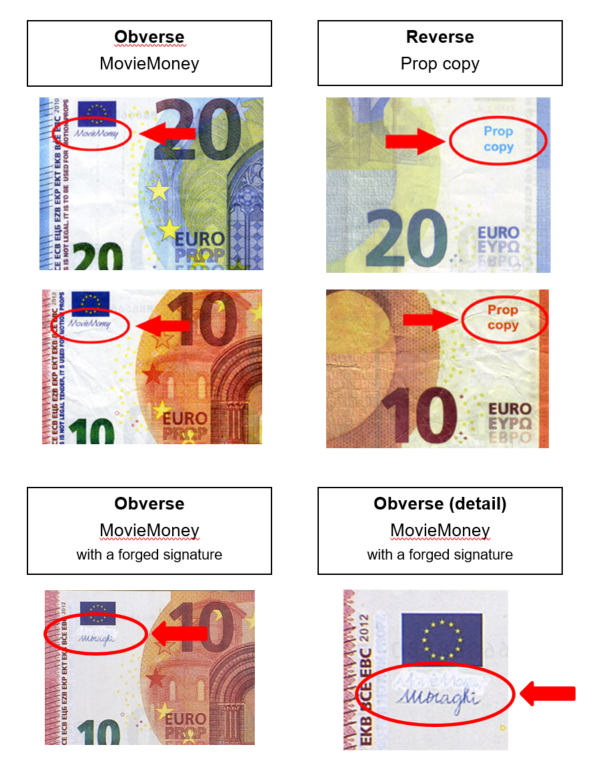More counterfeit money in circulation Loss arising from counterfeiting unchanged
In the first half of 2025, the Bundesbank withdrew approximately 36,600 counterfeit euro banknotes with a nominal value of just under €2.1 million from circulation in Germany. The number of counterfeits rose by 8 % compared with the second half of 2024. Levels of counterfeit money in Germany are still low, however. Statistically speaking, there were nine counterfeit banknotes per 10,000 inhabitants,
stated Burkhard Balz, the Bundesbank Executive Board member whose remit includes cash management.
The number of counterfeit €50 and €100 banknotes rose, while there were significantly fewer counterfeit €200 and €500 banknotes. As a result, in the first half of 2025, the total loss arising from counterfeiting remained virtually unchanged compared with the second half of 2024. “We’re seeing counterfeiters going back to making greater use of the more common denominations – €50 and €100 banknotes – in fraudulent transactions involving expensive goods,” Mr Balz remarked.
The table below shows the distribution of counterfeits across the various denominations in the first half of 2025 and changes compared with the second half of 2024.
Banknotes | Number | Share (rounded) | Change compared with H2 2024 |
| €5 | 585 | 2 % | + 6 % |
| €10 | 1,722 | 5 % | − 20 % |
| €20 | 7,780 | 21 % | − 13 % |
| €50 | 18,788 | 51 % | + 27 % |
| €100 | 6,137 | 17 % | + 38 % |
| €200 | 1,311 | 4 % | − 47 % |
| €500 | 287 | 1 % | − 32 % |
| Total | 36,610 |
|
|
Compared with the second half of 2024, the proportion of simple counterfeits has declined somewhat, but remains high. These basic counterfeits have “MovieMoney” printed on the front or “Prop copy” on the back. On some of the specimens the “MovieMoney” label had been covered over and replaced with an imitation signature.
Recognising counterfeit banknotes
As counterfeit banknotes are not replaced, the Bundesbank strongly recommends checking banknotes using the “feel, look, tilt” method. It is advisable to compare a suspicious banknote with one definitely known to be genuine and to always check more than one security feature.
All counterfeits can be identified by checking the following authentication features:
- Feel:
- Most euro banknotes have paper that is crisp and firm to the touch, which means it is possible to identify simple counterfeits just by feeling the banknote. However, to be on the safe side, the Bundesbank recommends checking other features as well. A coating was applied to €5 and €10 banknotes from the Europa series, as well as some of the Europa series €20 notes; those notes feel smooth and firm. Both coated and uncoated €20 banknotes are in circulation.
- Raised print on the front of the banknotes can be identified by touch. For example, banknotes belonging to the Europa series have the letters “BCEECB EЦБ EZB EKP EKT EKB BĊE EBC” (and “ESB” on denominations of €50 and above) down their left edge as well as a series of short lines on the left and right-hand edges.
- Look:
- When any banknote is held against the light, the watermark appears as a shadowy image in the unprinted area.
- On denominations of €20 and above belonging to the Europa series, the upper section of the hologram contains a transparent window showing a portrait of Europa, a figure from Greek mythology.
- Tilt:
- An emerald number can be seen on the bottom left-hand side on the front of the banknotes belonging to the Europa series. When the banknote is tilted, the emerald number changes colour and the effect of a light stripe moving upand down becomes visible.
- The hologram images change when the banknote is tilted. Rainbow-coloured effects appear around the motifs.
- The €100 and €200 euro banknotes have been equipped with additional security features. The emerald number contains several euro symbols that change in colour. The hologram contains a satellite feature showing two euro symbols that move around the denomination number.
More counterfeit coins in circulation
While some 60,800 counterfeit coins were detected in German payments in the second half of 2024, 68,400 counterfeit coins were detected in the first half of 2025. In statistical terms, there were around 16 counterfeit coins per 10,000 inhabitants in Germany in the first six months of 2025. This represents an increase of 12 % compared with the second half of 2024.
Counterfeits were identified only in the three highest denominations, and their incidence in the first half of 2025 was as follows.
Coins | Number | Share (rounded) |
| 50 cent | 643 | 1 % |
| €1 | 5,360 | 8 % |
| €2 | 62,411 | 91 % |
| Total | 68,414 |
Checking coins for authenticity
The following pointers can make it easier to identify genuine coins.
- On genuine euro coins, the motif stands out clearly from the background of the coin. By contrast, the image on counterfeit coins often appears blurred, and the surface of the coins may be uneven.
- Counterfeits generally differ slightly in colour from genuine coins.
- The edge inscriptions of genuine €2 coins are sharp. Those on counterfeit coins are frequently incomplete or irregular.
- Genuine €1 and €2 coins are only weakly magnetic. They are attracted to magnets but can be removed again with very little effort. Counterfeit coins, on the other hand, are usually either non-magnetic or are strongly attracted to magnets.
Counterfeit prevention
Through its branch network, the Bundesbank provides training courses on counterfeit prevention free of charge to the banking industry, retailers and any other interested parties. In addition, the following online training modules (German only) can be accessed via the Bundesbank’s website.
Online training
for retailers and any other interested parties
für the Banking industry
